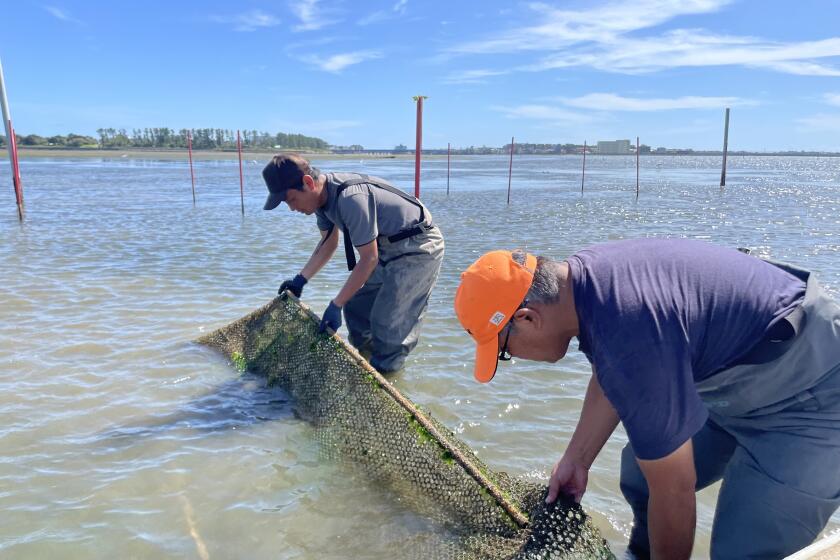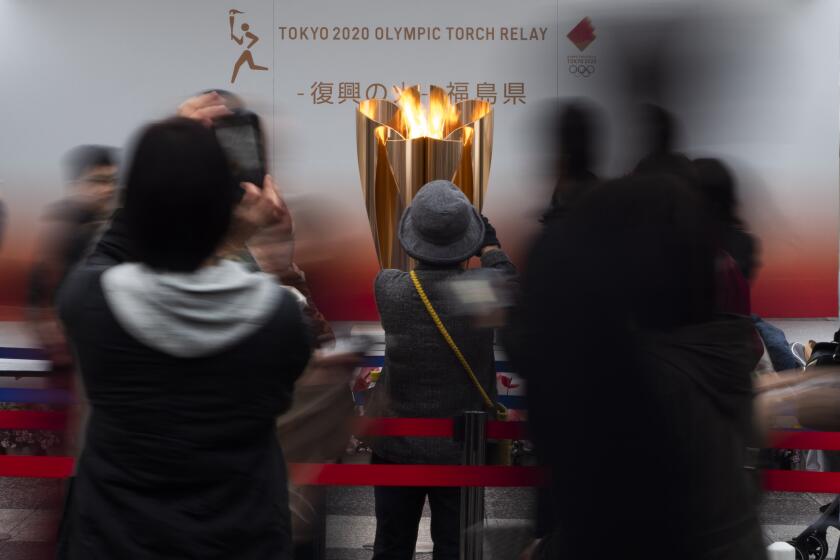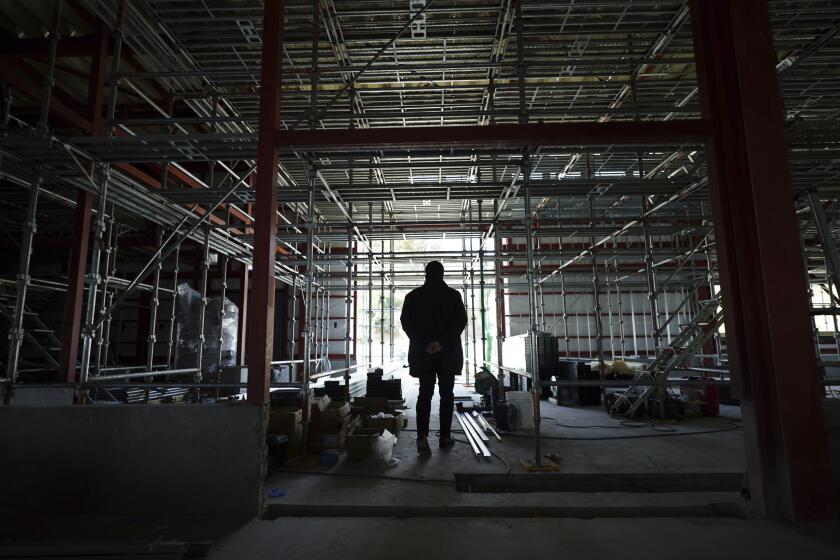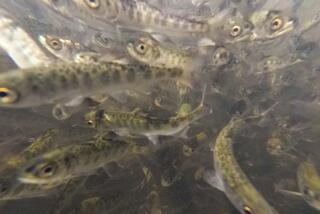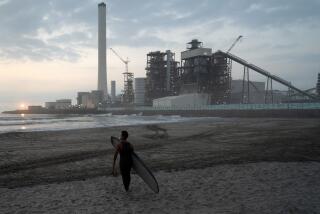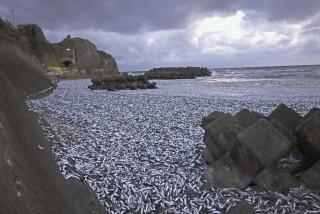China bans seafood from Japan after Fukushima nuclear plant begins releasing wastewater
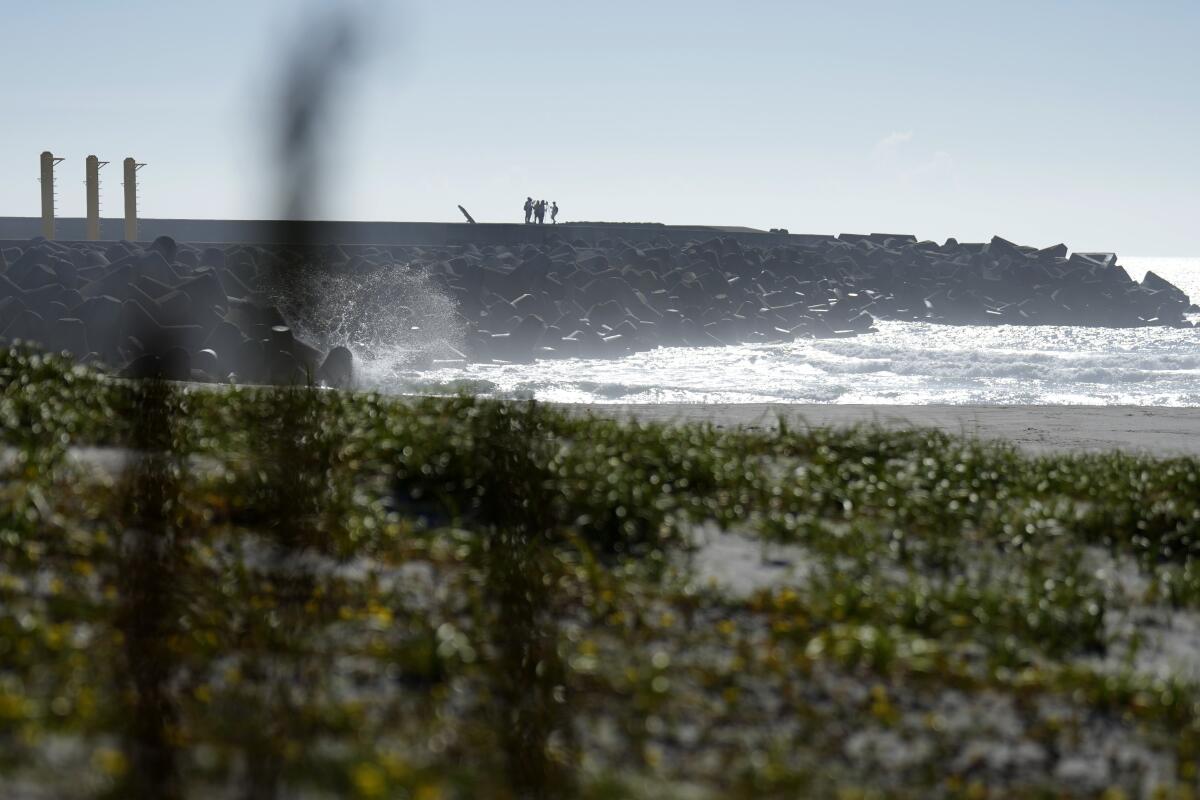
OKUMA, Japan — The tsunami-wrecked Fukushima Daiichi nuclear power plant ‘s operator says it began releasing its first batch of treated radioactive water into the Pacific Ocean on Thursday — a controversial step that prompted China to ban seafood from Japan.
People inside and outside the country protested the wastewater release, with Japanese fishing groups fearing it will further damage the reputation of their seafood and groups in China and South Korea raising concerns, making it a political and diplomatic issue.
In response to the wastewater release, Chinese customs authorities banned seafood from Japan, customs authorities announced Thursday. The ban started immediately and will affect all imports of “aquatic products” including seafood, according to the notice. Chinese authorities said they would “dynamically adjust relevant regulatory measures as appropriate to prevent the risks of nuclear-contaminated water discharge to the health and food safety of our country.”
Shortly after China’s announcement, TEPCO President Tomoaki Kobayakawa said the utility was preparing to compensate Japanese business owners appropriately for damages incurred by export bans over the wastewater release. He said that China was Japan’s key trading partner and that he would provide scientific explanations of the release so that the ban could be dropped as soon as possible.
Prime Minister Fumio Kishida said Japan asked China to immediately lift the ban. “We will keep strongly requesting that the Chinese government firmly carry out a scientific discussion,” Kishida said, pledging to protect the fisheries industry against reputational damage from the release.
The Japanese government and TEPCO say the water must be released to make room for the plant’s decommissioning and to prevent accidental leaks. They say that the treatment and dilution will make the wastewater safer than international standards and that its environmental impact will be negligible.
Tony Hooker, director of the Center for Radiation Research, Education, Innovation at the University of Adelaide in Australia, said the water released from the Fukushima plant is safe.
Japan’s fishing and seafood industry is under threat as warming sea temperatures spur changes in marine life behavior and migration patterns.
“It’s a very political issue of disposing radiation into the sea,” he said. “I understand people’s concerns, and that’s because we as scientists have not explained it in a very good way, and we need to do more education.”
Still, some scientists say the long-term impact of the low-dose radioactivity that remains in the water requires attention.
In a live video from a control room at the plant, Tokyo Electric Power Co. Holdings, or TEPCO, showed a staff member turning on a seawater pump with a click of a mouse, marking the beginning of a controversial project that is expected to last for decades.
“Seawater Pump A activated,” the main operator said, confirming that the release was underway. TEPCO later confirmed that the seawater pump was activated at 1:03 p.m., three minutes after the final step began.
Fukushima was hoping the Olympics would make people forget the 2011 nuclear disaster. But the best surfers in the world will not be riding the waves along the region’s coast.
In a statement Thursday, International Atomic Energy Agency Director General Rafael Mariano Grossi said: “IAEA experts are there on the ground to serve as the eyes of the international community and ensure that the discharge is being carried out as planned consistent with IAEA safety standards.”
The United Nations agency also said it would launch a webpage to provide live data on the discharge, and repeated its assurance that it would have an on-site presence for the duration of the release.
The water release begins more than 12 years after the March 2011 nuclear meltdowns caused by a massive earthquake and tsunami. It marks a milestone for the plant’s battle with an ever-growing radioactive water stockpile that TEPCO and the government say has hampered the daunting task of removing the fatally toxic melted debris from the reactors.
The pump activated Thursday afternoon sent the first batch of the diluted, treated water from a mixing pool to a secondary pool 10 minutes later. The water then moves through a connected undersea tunnel that empties it more than half a mile off the coast. Officials said the water moves at a walking speed and will take about 30 minutes to exit from the tunnel.
Japan is confronting a depopulation crisis because of a precipitously falling birth rate, but one mountain town has bucked the trend — spectacularly.
The operator checked data and the progress on a set of four monitors that show the water volume, pump conditions and any alerts.
TEPCO executive Junichi Matsumoto said Thursday’s release was planned to start small in order to ensure safety.
The wastewater is collected and partly recycled as cooling water after treatment, with the rest stored in around 1,000 tanks, which are already filled to 98% of their 1.37-million-ton capacity. Those tanks, which cover much of the plant complex, must be freed up to build the new facilities needed for the decommissioning process, officials said.
Final preparation for the release began Tuesday, when just one ton of treated water was sent from a tank for dilution with 1,200 tons of seawater, and the mixture was kept in the primary pool for two days for final sampling to ensure safety, Matsumoto said. A batch of 460 tons was to be sent to the mixing pool Thursday for the actual discharge.
News Alerts
Get breaking news, investigations, analysis and more signature journalism from the Los Angeles Times in your inbox.
You may occasionally receive promotional content from the Los Angeles Times.
Fukushima’s fisheries, tourism and economy — which are still recovering from the disaster — worry that the release could be the beginning of new hardship.
Fukushima’s current fish catch is only about one-fifth its pre-disaster level, in part because of a decline in the fish population. China has tightened radiation testing on Japanese products from Fukushima and nine other prefectures, halting exports at customs for weeks, Fisheries Agency officials said.
Kishida said the release was imperative and could not be postponed. He noted that an experimental removal of a small amount of the melted debris from the No. 2 reactor is set for later this year using a remote-controlled giant robotic arm.
In 2021, the Japanese government announced plans to release the treated water to the sea. On Sunday, Kishida made a rushed visit to the plant before meeting with fisheries representatives and pledging to support their livelihoods until the release ends.
Ten years after a massive earthquake hit northern Japan, triggering a tsunami and a nuclear disaster, the lives of many who survived remain on hold.
The hurried timeline raised skepticism that it was made to fit Kishida’s busy political schedule in September. But Economy and Industry Ministry officials say they wanted the release to start as early as possible and amass good safety records ahead of the fall fishing season.
The earthquake and tsunami destroyed the plant’s cooling systems, causing three reactors to melt. Highly contaminated cooling water applied to the damaged reactors has leaked continuously to building basements and mixed with groundwater.
TEPCO plans to release 31,200 tons of the treated water by the end of March 2024, which would empty only 10 tanks because of the production of contaminated wastewater at the plant, though the pace will later pick up.
More to Read
Sign up for Essential California
The most important California stories and recommendations in your inbox every morning.
You may occasionally receive promotional content from the Los Angeles Times.
